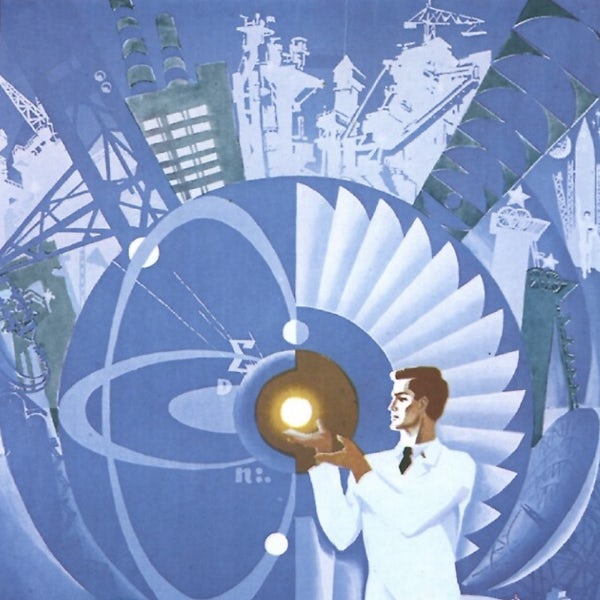Our Arnold and Landau Junior Fellowships continue a tradition of contact between British and Russian scientists dating back to Newton.
Early in 1993, in the heady days after the fall of Communism, a Russian chemist named Kirill Zamaraev came and worked in the laboratory at the Royal Institution in Mayfair. He was the holder of one of at least 20 Kapitza Fellowships: a scheme created by the Royal Society three decades ago to help Russian scientists travel to this country and work alongside their British counterparts.
Thirty years later, in the same spirit, the London Institute created a programme of new Fellowships for scientists from Russia, Ukraine and Belarus. And because we are based at the Royal Institution, they do their research in physics and mathematics in the same building where Zamaraev did his work.
The story of scientific contacts between Britain and the countries of the former Soviet Union goes back to the earliest days of organised research. In the 18th century, the Royal Society’s president Sir Isaac Newton sent a copy of his book Principia Mathematica as a gift to Peter the Great. In the 19th century, the two most distinguished professors at the Royal Institution—Sir Humphry Davy and Michael Faraday—each received tributes from Russia. In Davy’s case, it was a silver bowl from Alexander I, which had been designed by the Tsar himself. As for Faraday, he was presented with a magnificent dagger of damascene steel by the Russian scientist and soldier Pavel Anosov.
Founded in 1724, the Russian Academy of Sciences is Russia’s equivalent of our Royal Society. Both were created to support and talk about science rather than to do it. From the beginning, there was an exchange of honorary foreign memberships between the two organisations. The roll call of Royal Society Russians has included some of the grandest names in Russian science, such as Krusenstern, Chebyshev, Mendeleev, Metchnikoff, Pavlov, Kapitza, Kolmogorov, Landau and Arnold.
The Royal Institution, which was created in 1799, has done more than talk about science. It has also made transformative discoveries. It was here, for instance, that Davy identified nine elements and Faraday established the fundamental principles of electromagnetism. As with the Royal Society, the points of contact between Russia and the Royal Institution have been many.
Dmitry Mendeleev, founding father of the periodic table, was a regular visitor at the Royal Institution, collaborating on research with its secretary, Sir Frederick Bramwell. Ivan Pavlov worked with two Royal Institution professors of physiology. When Pavlov died, one of them, Sir Joseph Barcroft, wrote his obituary in Nature, noting that the neurologist was “an object of affection to all with whom he came in contact”. In the 1920s, one Boris Orelkin worked at the Royal Institution on crystallography beside the resident professor, Sir William Bragg.
Then there was Zamaraev, who worked on catalysis here at the Royal Institution in the 1990s. His Kapitza Fellowship was named after Pyotr Kapitza, the Nobel Prize-winning Russian physicist who was also a foreign member of the Royal Society. Such was the Soviet esteem for that organisation that it’s reported that Stalin himself, when his head of security wanted to arrest Kapitza, forbade him. Why? Because, Stalin pointed out, Kapitza was a member of the Royal Society.
Our Fellowships and Junior Fellowships are named after the Russian theoretical physicist Lev Landau and the Ukrainian-born mathematician Vladimir Arnold. We choose to honour them due to our deep respect for their talents, and our belief that, in science, the spirit of curiosity crosses all borders.
No one better embodied that spirit than the great Mendeleev, who visited England 14 times. When he spoke at the Royal Institution, he praised the “glorious name” of Faraday. His dream, he once declared, was to bring together Russian and British scientists for “the development of the world”.
That noble ambition is also the aim of our Arnold and Landau programme.















